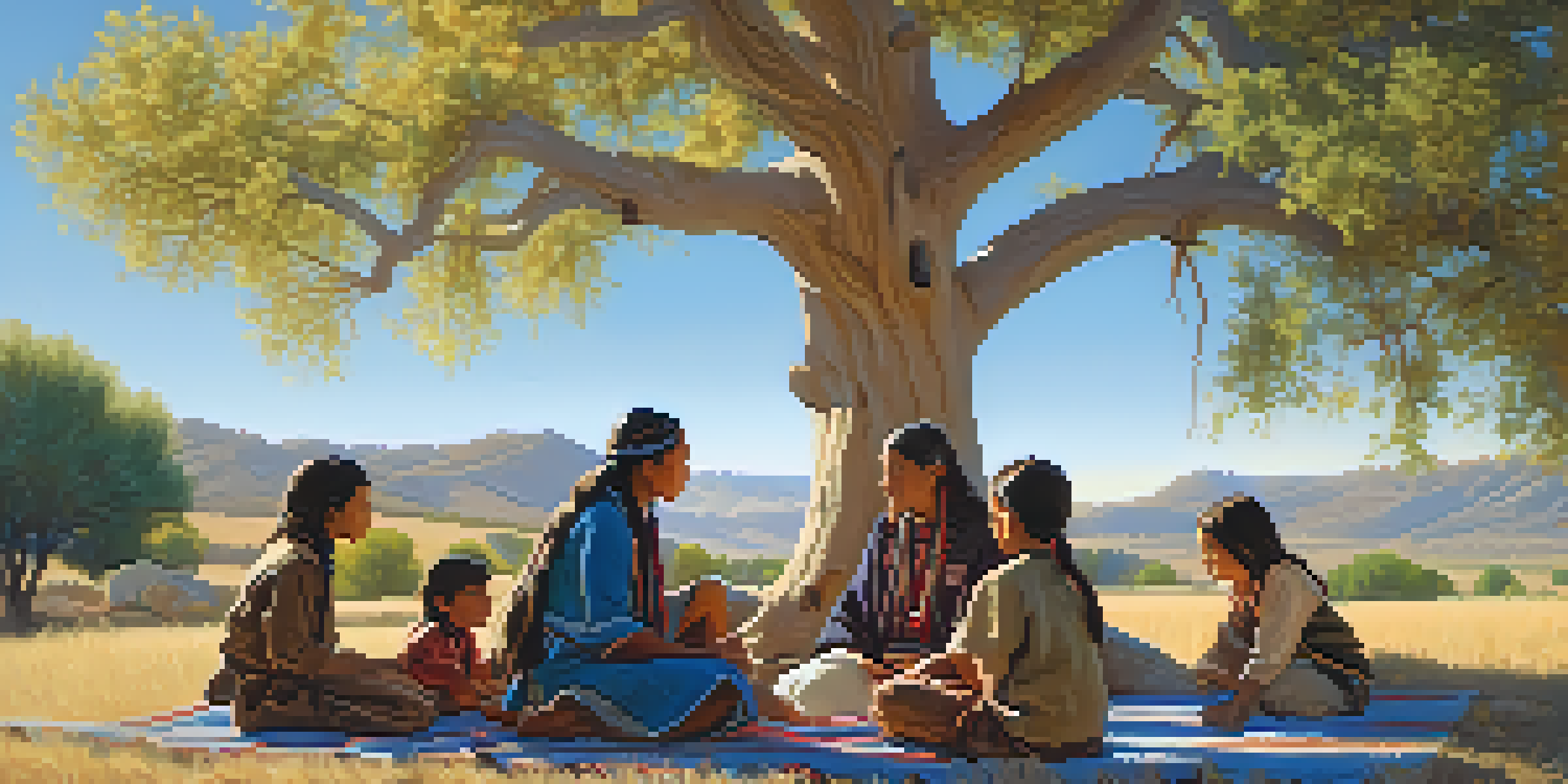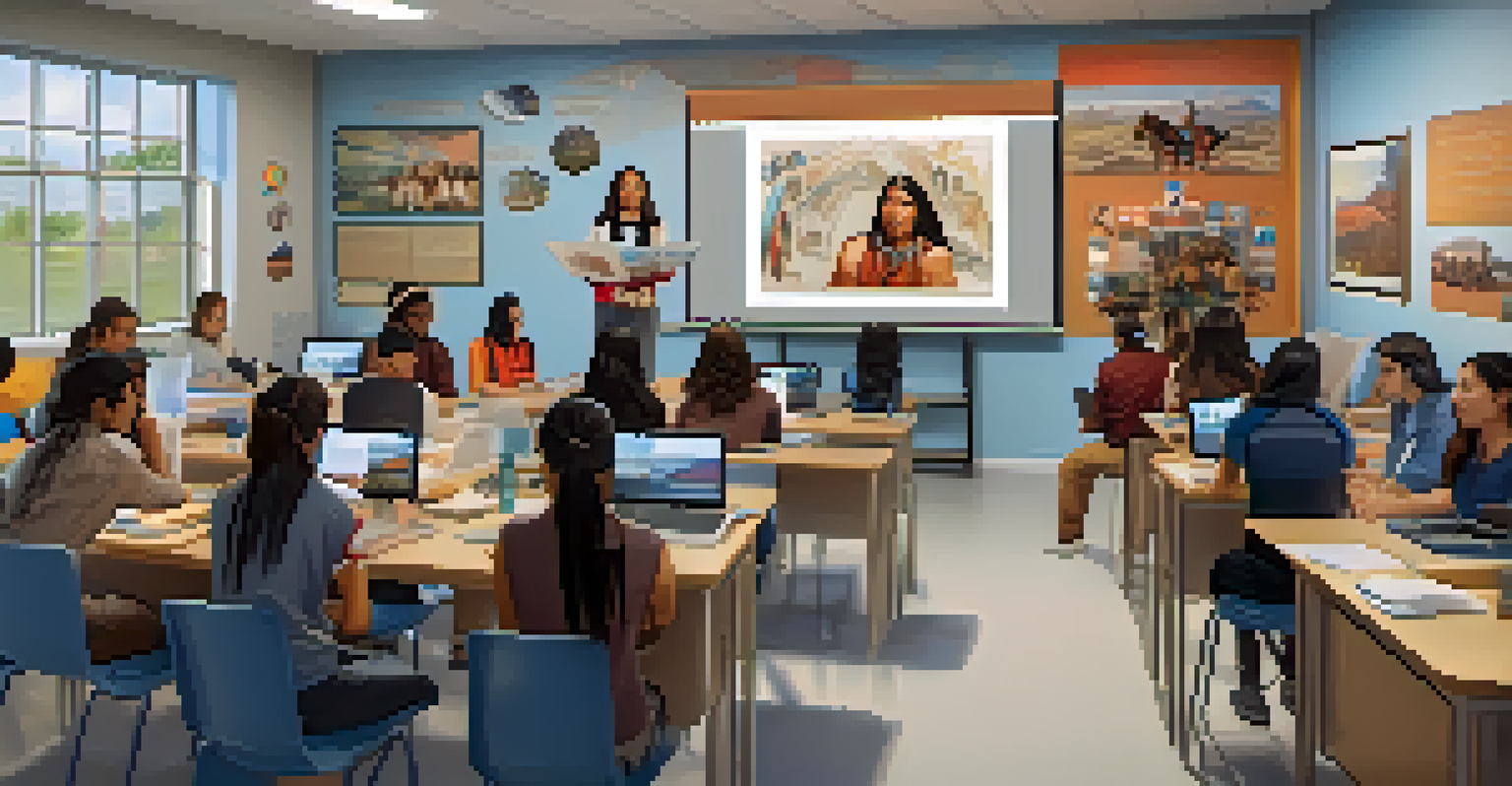The Role of Native American Education in Arizona's History

Introduction to Native American Education in Arizona
Native American education in Arizona has deep roots intertwined with the state's history. It reflects the rich cultural heritage of various tribes that have inhabited the region for centuries. Understanding this education system helps us appreciate the unique perspectives and values it promotes.
Education is not the filling of a pail, but the lighting of a fire.
From traditional methods to contemporary practices, Native American education has evolved while maintaining its core principles. Schools often emphasize the importance of community, connection to the land, and cultural identity. This approach not only educates but also empowers students to embrace their heritage.
As we delve deeper into this topic, we'll explore how these educational practices have shaped the communities and influenced the broader landscape of Arizona. By recognizing the importance of Native American education, we can better understand its role in the state's historical narrative.
Cultural Foundations of Native American Education
At the heart of Native American education is a foundation built on cultural values. Many tribes prioritize storytelling, oral traditions, and hands-on learning as core educational practices. This method fosters a sense of belonging and encourages students to connect with their ancestors' wisdom.

For instance, the Hopi tribe emphasizes the importance of agriculture and the spiritual connection to the earth. Their education system incorporates teachings about planting, harvesting, and the significance of natural cycles. Such practices not only educate students academically but also nurture their spiritual and emotional well-being.
Cultural Roots Shape Education
Native American education in Arizona is deeply rooted in cultural values, emphasizing storytelling and hands-on learning to foster identity and community connection.
These cultural foundations serve as a reminder that education is not just about academic success, but also about understanding one's identity and place in the world. By integrating cultural teachings, Native American education creates a holistic learning experience that resonates deeply within the community.
Historical Context: Native American Education Pre-1900s
Before the 1900s, Native American education in Arizona was largely informal and community-oriented. Elders played a vital role in imparting knowledge, skills, and cultural values to younger generations. This education system was tailored to the specific needs and traditions of each tribe.
The preservation of one's own culture does not require contempt or disrespect for other cultures.
However, the arrival of European settlers brought significant changes. Many tribes faced pressures to assimilate into Western education models, which often disregarded their cultural heritage. This led to the establishment of government-run boarding schools aimed at 'civilizing' Native American children.
Despite these challenges, many tribes resisted assimilation and continued to uphold their traditional educational practices. This period marked a turning point, as it sparked a movement to reclaim and revitalize Native American educational systems, laying the groundwork for future generations.
Impact of Boarding Schools on Native Education
Boarding schools had a profound impact on Native American education in Arizona, often resulting in cultural disconnection. Children were taken from their families and communities, forced to abandon their languages and traditions. This loss created a significant gap in the transmission of cultural knowledge.
While some students benefited from access to basic education, the emotional and psychological toll was immense. Many faced harsh discipline and were punished for practicing their cultural customs. This experience left lasting scars that affected generations of Native Americans.
Impact of Boarding Schools
The legacy of government-run boarding schools profoundly affected Native American education by disrupting cultural transmission and creating emotional scars.
Despite the negative impacts, the legacy of these schools also sparked resilience within Native communities. Many former students became advocates for cultural preservation and education reform, seeking to create learning environments that honor and integrate their heritage.
Revival of Native American Education in the 20th Century
The 20th century saw a resurgence in the importance of Native American education, driven by a desire to reclaim cultural identity. As tribes began to establish their own schools, educators focused on blending traditional knowledge with contemporary curriculum. This shift allowed for a more holistic approach to learning.
Tribal colleges and universities emerged, providing higher education opportunities that honored Native culture. Institutions like Diné College and the Institute of American Indian Arts became beacons of hope, fostering a new generation of Native leaders and scholars. These schools emphasize not only academic achievement but also the importance of cultural pride.
This revival has contributed to a greater understanding of Native American issues and perspectives within broader educational contexts. It highlights the importance of inclusive education that respects and values diverse cultural backgrounds.
Challenges Facing Native American Education Today
Despite significant progress, Native American education in Arizona still faces numerous challenges. Many schools on reservations struggle with limited funding, resources, and qualified educators. This inequity often results in lower educational outcomes for Native students compared to their peers.
Additionally, there is a continued need for culturally relevant curricula that reflect the values and histories of Native communities. Many educators are working hard to bridge this gap, but systemic issues remain. Ensuring that students see themselves represented in their education is crucial for fostering engagement and success.
Future Focus on Innovation
The future of Native American education in Arizona looks promising as communities push for innovative teaching methods while preserving cultural traditions.
Addressing these challenges requires collaboration between tribal leaders, educators, and policymakers. By working together, there is potential to create a more equitable educational landscape that honors the rich heritage of Native American culture.
The Future of Native American Education in Arizona
Looking ahead, the future of Native American education in Arizona holds promise as communities continue to advocate for their needs. There is a growing movement towards integrating technology and innovative teaching methods while preserving cultural traditions. This blend can create dynamic learning environments that resonate with students.
Moreover, an increasing number of Native scholars are entering the field of education, bringing firsthand knowledge and experience to the classroom. Their involvement is crucial in shaping curricula that are both relevant and empowering for Native students. The emphasis on mentorship and community involvement is also gaining traction.

As we move forward, supporting these initiatives will be vital in ensuring that Native American education thrives. By embracing a future that honors the past while looking toward innovation, Arizona can create a more inclusive and enriching educational experience for all.